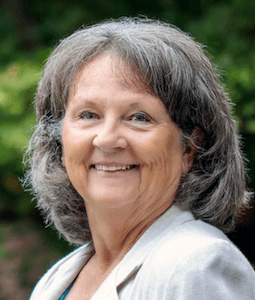Department of Geography
Directory
Susan L. Cutter
| Title: | Carolina Distinguished Professor Emerita Director of the Hazards Vulnerability & Resilience Institute |
| Department: | Geography College of Arts and Sciences |
| Email: | scutter@sc.edu |
| Phone: | 803-777-1590 |
| Office: | Callcott, Room 312 |
| Resources: |
Curriculum Vitae [pdf] |

Bio
Dr. Susan Cutter is a Carolina Distinguished Professor of Geography at the University of South Carolina and co-director of the Hazards Vulnerability & Resilience Institute (HVRI). She has authored or edited 15 books, 200+ plus peer-reviewed articles and book chapters, and mentored more than 75 masters and doctoral candidates. Her research focusses on vulnerability and resilience science with specific reference to methods, models, and metrics. Her scientific contributions include the hazards of place model of vulnerability, the disaster resilience of place model, as well as tools for assessing spatial and temporal variability in vulnerability (Social Vulnerability Index or SoVI®) and resilience (Baseline Resilience Indicators for Communities [BRIC] Index). Her policy-relevant work focuses on the evidentiary basis for hazard mitigation and disaster recovery policy and practice at local, state, national, and international levels. In particular, she continues to lead investigations of the disproportionate spatial and temporal impacts of disasters on vulnerable populations and the places where they live. Dr. Cutter is an elected fellow of American Association for the Advancement of Science (AAAS). She was also the recipient of her discipline’s highest awards: American Association of Geographers (AAG) Lifetime Achievement, Presidential Achievement, and the Wilbanks Award for Transformation Research. In 2023, she received the Charles E. Fritz Award for Career Achievements in the Social Science Disaster Area from the International Sociological Association, RC 39 Sociology of Disasters. She received an honorary doctorate from the Norwegian University of Science and Technology (2015), and elected as a foreign member of the Royal Norwegian Society of Sciences and Letters that same year. In 2024, Susan became an elected member of both the American Academy of Arts and Sciences and the U.S. National Academy of Sciences.
Research
Hazards, risk, and disasters
Vulnerability science
Environmental equality and inequality
Teaching
- GEOG 330: Geography of Disasters
- GEOG 530: Environmental Hazards
- GEOG 730: Seminar in Environmental Geography
- GEOG 830: Advanced Seminar in Environmental Geography
Representative Publications
Susan L. Cutter, Melanie Gall, and Claire B. Rubin (eds.), 2025. From Disaster to Catastrophe: Emergency Management in the 21st Century, Second Edition, Routledge.
Cutter, S.L. 2024. The origin and diffusion of the Social Vulnerability Index (SoVI), International Journal of Disaster Risk Reduction 109 (July), 104576. https://doi.org/10.1016/j.ijdrr.2024.104576
Morgan, Grayson R., E.M Kemp, M. Habets, K. Daniels-Baessler, G. Waddington, S. Adamo, C. Hultquist, and S.L. Cutter, 2024. Defining disadvantaged places: Social burdens of wildfire exposure in the Eastern United States, 2000-2020, Fire 7, 124. https://doi.org/10.3390/fire7040124
Robertson, B. W., Dow, K., Salinas, J., & Cutter, S. L. 2024. Heat risk perceptions and coping strategies of the unhoused. International Journal of Environmental Research and Public Health, 21(6), 737. https://doi.org/10.3390/ijerph21060737
Blackwood, L. and S.L. Cutter, 2023. The application of the Social Vulnerability Index (SoVI) for geo-targeting of post-disaster recovery resources, Intl. J. Disaster Risk Reduction 92: 103722. https://doi.org/10.1016/j.ijdrr.2023.103722
Habets, M., S.L. Jackson, S.L. Baker, Q. Huang, L. Blackwood, E.M. Kemp, and S.L. Cutter, 2023. Evaluating the quality of state hazard mitigation plans based on hazard identification, risk, and vulnerability assessments, J. Homeland Security and Emergency Management, Nov. 20, 2023. https://doi.org/10.1515/jhsem-2022-0060
Derakhshan, S., L. Blackwood, M. Habets, J.F. Effgen, and S.L. Cutter, 2022. Prisoners of scale: Downscaling community resilience measurements for enhanced use, Sustainability 14, 6927. https://doi.org/10.3390/su14116927
Derakhshan, S., C.T. Emrich, and S.L. Cutter, 2022. Degree and direction of overlap between social vulnerability and community resilience measurements, PLoS ONE 17(10):e0275975. https://doi.org/10.1371/journal.pone.0275975
Cutter, S. L. and Q. Huang, 2022. The persistence of COVID-19 and inequities in the U.S. experience, Environment: Science and Policy for Sustainable Development 64 (5-6): 4-14.
Cutter, Susan L., 2021. The changing nature of hazard and disaster risk in the Anthropocene, Annals of the American Association of Geographers 111(3): 819-827. https://doi.org/10.1080/24694452.2020.1744423